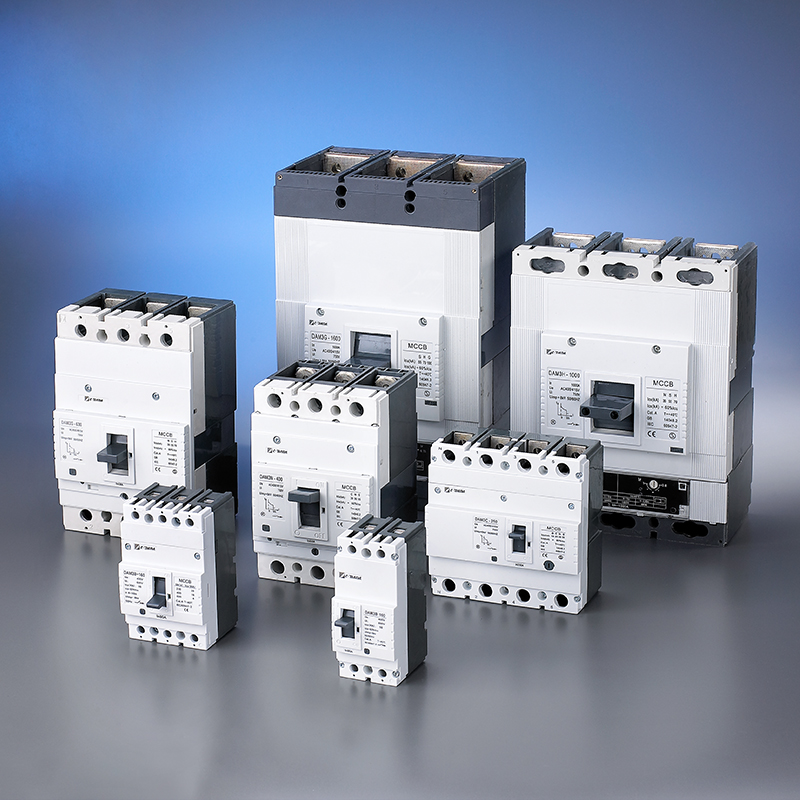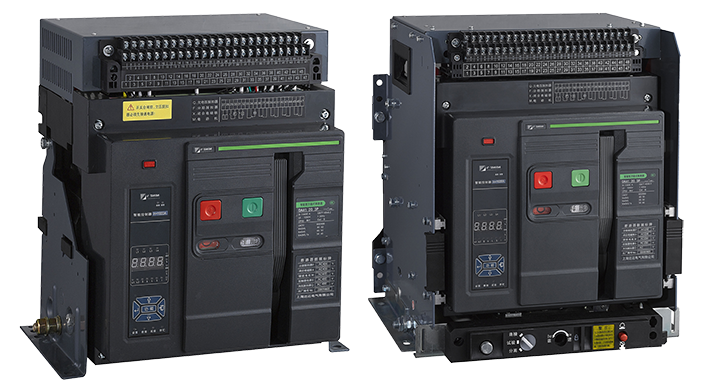In modern electrical systems, circuit breakers play a critical role in protecting equipment and ensuring safety. Two of the most commonly used types are Molded Case Circuit Breakers (MCCBs) and Air Circuit Breakers (ACBs). While both serve the same basic function — interrupting faulty electrical currents — they differ significantly in design, performance, and application.
Understanding these differences is essential for engineers, electricians, and facility managers when selecting the right protection device for their system.
A Molded Case Circuit Breaker (MCCB) is a type of low-voltage circuit breaker designed to protect electrical circuits from overloads and short circuits. It is widely used in residential, commercial, and light industrial applications.

Terminals: Connect incoming and outgoing wires.
Operating Mechanism: Controls the opening and closing of contacts.
Trip Units: Detect abnormal current levels and trigger disconnection.
MCCBs use thermal or magnetic tripping mechanisms. A bimetallic strip bends when heated by excessive current, activating the trip mechanism. In high-current faults, a magnetic coil creates a strong field that forces the contacts apart.
This dual protection ensures rapid disconnection within seconds, minimizing damage to wiring and connected devices.
An Air Circuit Breaker (ACB) is a high-capacity circuit breaker typically used in medium- to high-voltage power systems. Unlike MCCBs, ACBs use compressed air or insulating gas to extinguish the arc during fault conditions.

Separable Contacts: Allow for quick disconnection.
Dielectric Chamber: Houses the contacts and provides insulation.
Pneumatic Operating System: Uses compressed air to separate contacts rapidly.
When a fault is detected, the trip unit signals the operating mechanism. The release of stored compressed gas forces the contacts apart in milliseconds, effectively stopping the current flow and preventing damage.
This fast response time makes ACBs ideal for applications where immediate disconnection is crucial.
| Attribute | MCCB | ACB |
|---|---|---|
| Current Rating | Up to 3200A | Up to 6300A or higher |
| Size | Compact and lightweight | Larger and heavier |
| Application | Residential and small commercial systems | Industrial plants, substations, main panels |
| Cost | Lower | Higher |
| Maintenance | Minimal, mostly mechanical checks | Requires periodic gas and seal inspections |
Let’s explore each of these differences in detail:
MCCBs are generally rated up to 3200A, making them suitable for moderate load applications. ACBs, on the other hand, can handle much higher currents — often up to 6300A or more — which makes them ideal for large-scale industrial operations.
Due to their lower capacity, MCCBs are compact and fit easily into standard distribution panels. ACBs are larger and require dedicated switchgear cabinets due to their complex internal structure and higher power handling capabilities.
MCCBs are commonly found in homes, offices, and retail spaces to protect branch circuits. ACBs are typically installed in heavy-duty environments such as factories, utility substations, and central power distribution units.
MCCBs are cost-effective and widely used in budget-conscious projects. ACBs, with their advanced design and higher performance standards, come at a premium price, especially in industrial-grade models.
MCCBs require minimal maintenance — mainly visual inspections and occasional contact cleaning. ACBs need regular servicing of gas tanks, seals, and pneumatic components, usually performed by trained technicians.
Selecting the right circuit breaker depends on several key factors:
Load Requirements: Evaluate the maximum current your system will carry.
Fault Current Level: Determine the expected short-circuit current to ensure proper breaking capacity.
Installation Environment: Consider space availability and environmental conditions.
Budget Constraints: Balance upfront costs with long-term operational needs.
Maintenance Capability: Assess whether you have the resources for regular servicing.
For smaller installations like office buildings or data centers, MCCBs offer reliable and economical protection. For large-scale industrial facilities or primary power distribution centers, ACBs provide the necessary capacity and durability.
Both MCCBs and ACBs are essential components in electrical protection systems. While MCCBs are well-suited for residential and commercial settings, ACBs excel in high-load industrial environments.
By understanding the differences between these two types of circuit breakers, professionals can make informed decisions that enhance system reliability, reduce downtime, and improve overall safety.
Choosing the right breaker not only protects equipment but also ensures the smooth operation of electrical networks across various sectors.